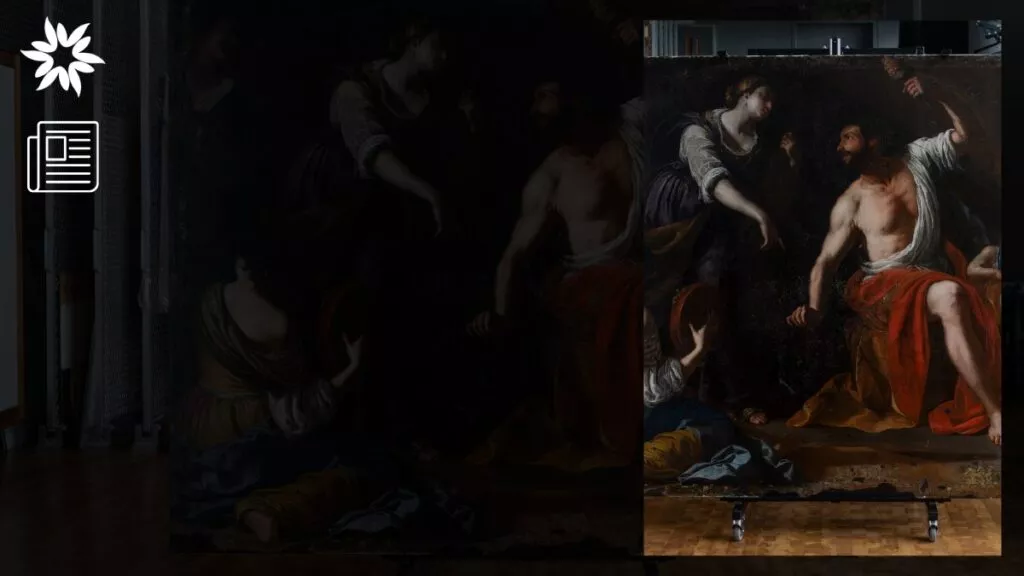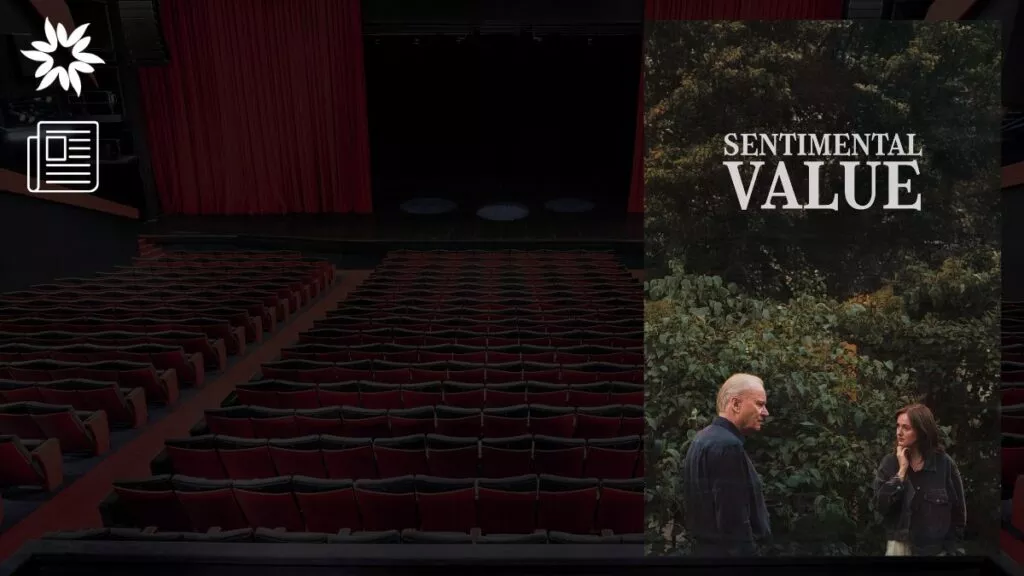Sculpting involves creating three-dimensional art, where you can actually walk around and see the work from different angles.
Instead of just painting on a flat surface, sculptors use materials like clay, stone, metal, or even random everyday objects to bring their ideas to life in physical form.
Sculptures can be as small as figurines or as massive outdoor installations.
So, why bother learning different techniques?
Well, each method and material gives you a completely different look.
Knowing these techniques helps you determine what works best for your project, whether you’re shaping clay, carving stone, or casting metal.
You’ll be happy to know this article will guide you through some of the most common sculpting techniques, helping you get comfortable with the basics and explore what works best for you as you start your sculpting journey.
Key Takeaways
- You can shape sculptures by adding materials, like clay or wax, or by carving away from a solid block, like stone or wood.
- Mixing different materials, like metal, fabric, or even found objects, lets you get creative and make unique, eye-catching sculptures.
- Modern tech, like 3D printing and laser cutting, makes it easier and faster to create detailed, precise sculptures that would be hard to do by hand.
Additive Sculpture Techniques
In additive sculpture, artists create a form by building up materials, layer by layer, rather than carving away from a solid block.
This technique gives sculptors great flexibility, allowing them to shape and adjust their work as they go.
So, here are some of the methods commonly used in additive sculpture:
1. Clay Modeling
Clay is one of the most popular materials for additive sculpture because it’s soft and easy to shape.
Artists can use various methods like pinching, coiling, or slab-building to form their sculptures.
Common tools include wire loops, knives, and spatulas to smooth, shape, and add texture.
Water-based clay dries when exposed to air, while oil-based clay stays workable longer, making it great for detailed work.
The good thing is that this technique allows for constant adjustments, so it’s ideal for beginners and pros alike.
2. Wax Sculpting
Wax is another pliable material used in additive sculpture, often as part of the lost wax casting process.
In this technique, artists shape wax into a model, which can later be cast in bronze or another material.
Wax is softer than clay and is often preferred for intricate designs because it holds small details well.
However, it’s also fragile, so handling it with care is important.
Wax sculpting is often used for smaller models and prototypes due to its fine detail capability.
3. Papier-Mâché
Papier-mâché is a simple, lightweight technique that involves layering pieces of paper soaked in glue or paste over a form or armature.
It’s a great method for beginners or artists working on large, temporary pieces since it’s cheap and easy to manipulate.
Once dried, the paper hardens into a durable shell that can be painted or decorated.
Artists often use it for masks, props, and large sculptures, especially for parades or displays.
4. Assemblage
Assemblage is the technique of combining found objects or materials to create a sculpture.
You take everyday items, such as wood scraps, metal pieces, or even fabric, and combine them to form a new piece.
This method taps into the idea of recycling and creativity by reimagining objects in new ways.
Assemblage is particularly popular in contemporary and conceptual art, as it challenges the viewer to see beauty or meaning in discarded or unexpected materials.
Subtractive Sculpture Techniques
Subtractive sculpting is, essentially, about removing material to reveal the final form hidden within.
Instead of adding layers, you start with a solid block and carve away, using sculpting tools to chip, cut, or sand down the material.
Next, let’s look at some of the most common methods used in subtractive sculpture:
1. Stone Carving
Stone carving is one of the oldest and most classic subtractive techniques.
Artists use chisels, hammers, and rasps to carefully chip away at the stone, gradually revealing the sculpture.
Stones like marble, granite, and limestone are popular choices.
Stone carving requires a lot of patience and precision because once you remove material, you can’t add it back.
Famous sculptures, such as Michelangelo’s David, were created using this method, which showcases how stone can be transformed into lifelike, detailed masterpieces.
2. Wood Carving
Wood carving is similar to stone carving but offers more flexibility because wood is softer and easier to shape.
There are many types of wood to choose from, such as oak, basswood, or cedar, each offering different textures and hardness levels.
Common wood carving techniques include:
- Whittling: Carving small, detailed figures with a knife.
- Relief carving: Creating designs that stand out from a flat background.
- Chip carving: Cutting small, shallow chips to create patterns or designs.
Tools used in wood carving include knives, chisels, and gouges.
Unlike stone, wood allows for smoother cuts and intricate details but can be prone to splitting if not handled carefully.
3. Ice Sculpting
Ice sculpting is a unique, temporary form of subtractive sculpture.
You carve ice blocks into stunning sculptures using chisels, chainsaws, and even heat guns for fine detailing.
The temporary nature of ice means these sculptures often melt away within hours or days, making them a fleeting but dramatic art form, usually showcased at events like weddings or festivals.
Working with ice requires a quick hand, as it’s highly sensitive to temperature and can be fragile.
4. Plaster Carving
Plaster is a soft, inexpensive material that’s easy to work with. This is great for beginners or sketching out rough ideas.
Unlike stone or wood, plaster is often molded into a block first and then carved.
Artists can shape plaster using basic tools like scrapers and sandpaper.
It’s a forgiving material, as it’s easier to smooth out mistakes, making it a go-to choice for practicing designs before working on more expensive materials like stone.
Casting Techniques
Casting is a sculpting process in which an artist pours a liquid material into a mold and allows it to harden into a specific shape.
This method is great for making multiple copies of a sculpture or creating complex designs that would be difficult to carve or model by hand.
Here’s a look at some casting techniques:
1. Bronze Casting (Lost-Wax Process)
Bronze casting is one of the oldest and most famous sculpting methods.
It’s especially known for its role in classical sculpture, where many iconic statues were made using this method.
The traditional process, called lost-wax casting, involves first sculpting a model in wax.
The wax model is then coated in a ceramic or plaster mold, which is heated so the wax melts away, leaving a hollow cavity.
Molten bronze is then poured into the mold, filling the space left by the wax.
Once the bronze cools and solidifies, the mold is broken away, and the sculpture is polished and finished.
Bronze is popular because it’s durable and captures fine details. Because of this, it’s perfect for everything from small figures to large monuments.
Classical Greek and Roman artists used this technique extensively to create lifelike statues of gods, heroes, and political leaders.
Even today, artists continue to use the lost wax process for its ability to produce highly detailed and long-lasting sculptures.
2. Plaster Molding
Plaster casting is another common method, especially for creating molds that can be used to make multiple copies of a sculpture.
The artist first creates the model of the sculpture, which can be made from clay or other materials.
Then, plaster is applied around the model to create a negative mold.
Once the plaster mold is dry, the original model is removed, and liquid plaster is poured into the mold to form a new sculpture.
From there, the process is repeated to make multiple replicas.
In fact, plaster casting is often used in art schools because it’s inexpensive and easy to work with.
It’s also used for making life casts, where a mold is made directly from a person’s body to capture highly realistic detail.
Although plaster is not as durable as bronze, it’s a great material for temporary pieces or to create molds for casting other materials.
3. Resin Casting
Resin casting is a modern method that uses liquid plastic resins to create sculptures.
Resin is incredibly versatile because it can be colored, polished, and even made translucent, which gives artists a lot of creative freedom.
It’s also much lighter and less expensive than metal, making it a great option for smaller sculptures or detailed works that need to capture fine textures and intricate designs.
Resin is often used for creating prototypes, replicas, or intricate art pieces like jewelry or small figurines.
It’s also a favorite among contemporary artists who want to work with bright colors and smooth finishes that are difficult to achieve with traditional materials like bronze or plaster.
Plus, resin cures quickly, so artists can complete projects faster than other casting materials.
Mixed Media Techniques
Mixed media sculpturing combines materials and techniques to create unique, three-dimensional art.
Rather than limiting themselves to a single material, artists can mix things like metals, fabrics, wood, and even organic items to build visually striking and textured pieces.
Let’s dive into a few popular mixed-media methods:
1. Mixed Metal Sculptures
In mixed metal sculptures, artists use materials like steel, copper, or aluminum and bring them together through welding, soldering, or bolting.
Welding melts metals to fuse them together, creating sturdy, durable connections supporting large, complex designs.
Soldering is used for smaller, delicate work, where metal pieces are joined using a filler material.
Through these techniques, sculptors combine metals of different colors and textures, adding depth and dimension to the artwork.
Modern mixed metal sculptures are often abstract or industrial, contrasting rough, unfinished metal and polished surfaces.
2. Incorporating Organic Materials
A hallmark of mixed media is the ability to blend natural and man-made materials.
Artists often combine organic materials like wood, clay, and fabric with more traditional elements like metal.
For example, they might use driftwood alongside metal parts to create earthy, textured pieces or mix clay and fabric to add softness and warmth.
Doing this adds variety and a natural feel to their work.
Ultimately, combining natural and human-made materials creates a visually appealing and meaningful contrast.
3. Textile Sculptures
Textile sculptures bring a whole new dimension to mixed media by using fabrics, threads, and fibers to create texture and movement.
Artists can manipulate fabric in countless ways—folding, stitching, or draping it to build soft, flowing forms that contrast with harder materials like metal or wood.
Textiles add a tactile quality to sculptures, inviting the viewer to explore with sight and touch.
Often, artists layer materials like yarn or fabric with paint or found objects to build rich, multi-textured surfaces.
In mixed media art, there are no rules about what materials you can use.
The beauty lies in the freedom to experiment with different textures, colors, and forms to make something that’s truly one-of-a-kind.
Whether you’re working with metals, fabrics, or natural elements, the possibilities in mixed media are limitless.
Mixing different materials certainly adds visual interest, but it also goes deeper than that.
It adds a whole other layer of meaning to the artwork, inviting viewers to consider how the different elements work together and what they might symbolize.
Digital and Modern Techniques
In recent years, technology has completely transformed the way sculptures are created, offering artists tools like 3D printing, laser cutting, and CNC routing to push the boundaries of what’s possible.
With these technological advancements, sculptors have gained incredible precision, creativity, and speed, leading to unprecedented opportunities for experimentation and innovation.
1. 3D Printing
3D printing is revolutionizing the art of sculpture.
With this method, digital files are designed using software, and then those designs are printed layer by layer to create physical sculptures.
This process allows artists to create highly detailed, complex forms that would be incredibly difficult or even impossible to sculpt by hand.
Materials used in 3D printing range from plastic and resin to more durable substances like metal or ceramics.
Artists are using 3D printing for prototyping and final pieces, as it allows for precise and intricate sculptures with minimal waste.
Due to the availability of affordable desktop printers, 3D printing is also accessible to more artists, meaning anyone can experiment with this technology.
It’s especially useful for creating small-scale sculptures or detailed works like jewelry or intricate figurines.
As technology evolves, artists use it to explore new styles, including blending traditional and pop culture elements.
2. Laser Cutting and CNC Routing
Laser cutting and CNC (Computer Numerical Control) routing allow sculptors to create precise, intricate cuts in a variety of materials, such as wood, metal, acrylic, or even foam.
These machines are controlled by computer software, ensuring perfect accuracy with each cut.
CNC routing uses a rotating blade to carve designs, while laser cutting uses a high-powered laser beam to cut or engrave the material.
To achieve their artistic vision, sculptors often use these techniques for creating sharp geometric patterns, detailed reliefs, and architectural sculptures.
Laser cutting is especially known for its speed and precision, which allows it to produce highly detailed sculptures quickly.
CNC routing, on the other hand, is great for carving into thicker materials and allows artists to create large-scale sculptures with complex 3D elements.
Final Touches and Finishing Techniques
Once you’ve shaped your sculpture, it’s time for the finishing touches that bring it to life.
These last steps—polishing, painting, and sealing—are crucial for refining the piece and ensuring it will look great for years to come.
Polishing and Sanding
Polishing and sanding are essential for smoothing out the rough surfaces of a sculpture.
Sanding involves using different grades of sandpaper to gradually smooth out imperfections.
You might start with coarse grit to remove large flaws and finish with fine grit to smooth the surface.
But polishing goes one step further as it gives the sculpture a shiny, reflective finish.
For metal sculptures, a high polish can make the piece gleam in the light, while other materials like wood or plaster can also benefit from polishing for a clean, refined look.
Polishing can be done by hand or with machines, depending on the material and size of the sculpture.
For example, power tools often polish large metal sculptures to a mirror-like shine, which creates a striking contrast between light and shadow.
Painting and Patination
Adding color and texture is where a sculpture’s real personality emerges.
Painting can be applied using various techniques, from hand-painting with brushes to spray painting for a more even coat.
Different finishes, like matte or gloss, can change the entire feel of the piece.
Paint also serves as a protective layer, especially on materials like metal, which can rust or corrode over time if left untreated.
Patination is another method of adding color, especially on metal sculptures.
It’s a process where chemicals react with the metal’s surface, creating beautiful colors and textures.
Bronze, for example, can develop rich greens or browns through patination.
Artists control this process by applying chemicals and sometimes using heat to produce desired effects.
This technique adds depth and character to the sculpture and provides some level of protection against corrosion.
Sealing and Protecting
Finally, sealing the sculpture helps preserve all the hard work you’ve put into it.
Sealants, such as wax, lacquer, or polyurethane, protect the sculpture from environmental factors like moisture, UV rays, or dirt.
Wax is commonly used on bronze sculptures to protect the patina while adding a soft shine.
A durable, weather-resistant coating is essential for outdoor sculptures to keep them looking their best over time.
Sealing also enhances the sculpture’s appearance by deepening the colors and giving it a polished look.
Regular maintenance, like reapplying wax every six months, is necessary to keep the sculpture in top condition, especially for outdoor pieces exposed to the elements.
Choosing the Right Technique for Your Sculpture
When picking a sculpting technique, consider a few things, like the material you’re using, the kind of finish you want, your tools, and your experience.
All these factors can make a big difference in how easy the process is and how your final piece turns out.
- Material Properties: The material you’re working with will largely dictate your technique. For example, if you’re using clay, you can use modeling techniques to build up the form. Carving might be the best option if you’re working with wood or stone since these materials require removing rather than adding.
- Desired Finish: Think about how you want your final sculpture to look. A polished, detailed finish might push you toward techniques like casting or precise carving, whereas a rougher, more organic finish might be better achieved through basic modeling or assemblage.
- Available Tools: The tools you have access to can limit or expand your options. For example, you can carve wood or stone if you have chisels and hammers. If you’re limited to basic hand tools, materials like clay or wax are easier to shape and manipulate.
- Skill Level: Beginners should choose more forgiving techniques, such as modeling with clay or wax. These materials allow you to make adjustments easily. As you become more skilled, you can move on to more challenging materials and techniques like stone carving or metal casting.
Best Techniques for Beginners
For those just starting, the best approach is often modeling.
Working with clay or wax is ideal because these materials are pliable, allowing constant adjustments.
Clay, in particular, is highly versatile and doesn’t require complex tools, so you can start sculpting with just your hands and a few basic tools, such as wire cutters or wooden shaping tools.
While similar to clay, Wax is excellent for creating models that can later be cast in more durable materials like bronze.
Let’s Get Your Hands Dirty!
Now that you’ve explored the different sculpture techniques and materials, it’s time to start creating.
Whether you’re modeling with clay, carving wood, or experimenting with mixed media, each method offers a unique way to express your creativity.
Remember, there’s no right or wrong way to sculpt—every project is a learning experience.
Start with the basics, practice often, and don’t be afraid to try new techniques.
As you get more comfortable, challenge yourself with new materials or advanced methods.
Ready to bring your ideas to life?
Grab your tools, pick a material, and start sculpting today!








